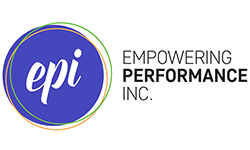Gratitude: The Best Leftover
Thanksgiving is over. We’ve gotten up from the table, leaving behind a decimated turkey and all the fixings to be enjoyed later.
But gratitude is the best Thanksgiving leftover of all.
Like many people, my family and I use Thanksgiving as an opportunity to express what we’re thankful for. And that’s a beautiful thing. Yet, it’s all too easy to jump back into work and leave our attitude of gratitude behind with the turkey carcass. So, how do we reinforce gratitude, especially now that we’re refocused on work? How can we actually use gratitude as a motivator for performance? And why does it matter?
It matters because gratitude physically changes your brain. In a good way.
Turns out we all have a gratitude “muscle,” which can be strengthened with practice. When we consciously take note of the good things in our lives, we become happier. That’s not particularly surprising. What has made researchers sit up and take notice, however, is that exercising our gratitude muscle also increases: our willpower, our ability to remain calm, and our employees’ morale. Those emotional boosts alone are strong incentives for cultivating gratitude.
Researchers define gratitude as more than just appreciation. This means acknowledging that “the positive things in our lives—like a success at work—are often due to forces outside of ourselves, particularly the efforts of other people.” Similarly, recognizing the efforts of others is a concrete way to motivate performance.
When a leader or coworker appreciates both our work and us as people, we want to come to work and perform well. That’s not rocket science . . . but it is brain science.
Gratitude also feels good—to both the person expressing it and the person receiving it.
To get really geeky about it, feelings of gratefulness activate the brain region associated with the neurotransmitter dopamine, which is directly linked to motivation. Dopamine increases the likelihood of action, reinforcing the behavior that sparked appreciation in the first place. Author Christine Comaford suggests we make gratitude a second-nature leadership trait. To do this, practice 6 “doses” of 30 seconds of focused gratitude every day. That’s only 3 minutes a day to “access the feeling of gratitude.”
By reinforcing gratitude regularly, we can “recalibrate” more easily during stressful times. This is because we’ve forged default behavior from myelinated neural pathways that “are up to 300 times faster.”
Being thankful is a self-motivator as well. When we're grateful, we feel more energized to work toward our goals. And we're also inspired to be kinder to and more appreciative of others.
That makes for a more empathetic and cooperative workplace, which is a very good thing. Not to mention that feeling grateful makes us healthier physically. That’s the perfect counterbalance to a big holiday meal!
Gratitude is the best leftover we can indulge in after Thanksgiving has come and gone. In fact, it should be a lifelong feast.
Michelle Kelly, CEO (Chief Enjoyment Officer)


